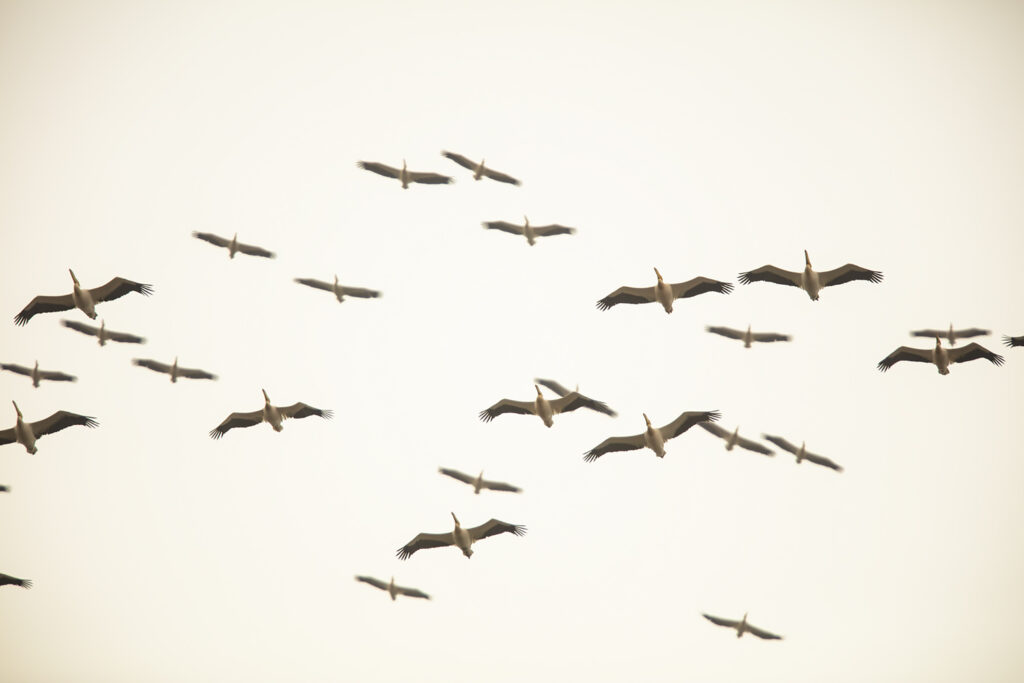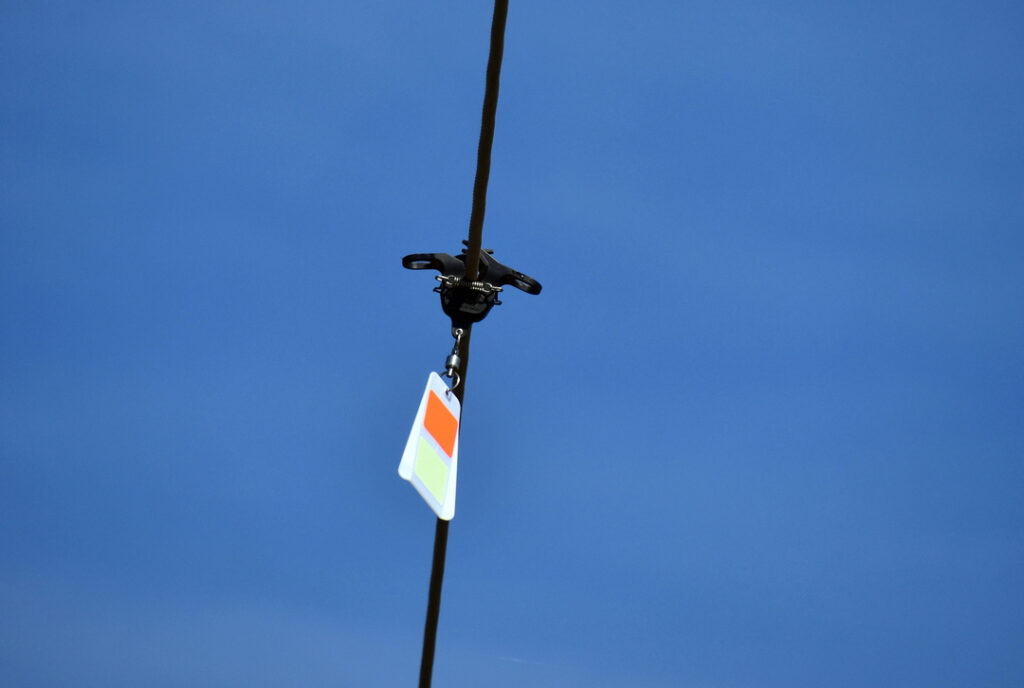Overhead power lines pose a severe threat to birds, especially large species, often leading to fatal collisions. To reduce this risk, conservation efforts, such as installing diverters, have proven effective; for instance, the team of the Romanian Ornithological Society recently added diverters to high-risk lines to protect bird populations.

Overhead power lines bring electricity to our homes, but they unfortunately also pose a threat to birds. Collisions with power lines are a major cause of avian mortality, affecting a significant number of species, including some that are already endangered. Larger birds with heavier bodies, such as swans, great bustards, and pelicans, which have reduced flight maneuverability, are more susceptible to these collisions than smaller, lighter, and more agile birds.
Additionally, some species—like swans, ducks, herons, and storks—have narrower fields of vision, increasing their risk of collision, as they may not detect the wires from certain angles. The risk of collisions rises further in low-visibility conditions, such as fog or intense sunlight.

The scope of the problem
Studies conducted in Europe estimate that in grassland areas, there are 113 collisions per kilometer per year, in agricultural land, 58 collisions per kilometer per year, and near wetlands, 489 collisions per kilometer per year. Birds collide with power lines at high speeds. In Romania, given the extensive length of the power network, this number translates to tens or even hundreds of thousands of birds lost annually. The injuries they sustain vary greatly and are comparable to trauma caused by road accidents.
Causes of collisions
The primary cause of these collisions is birds’ inability to perceive power lines as obstacles. Accidents occur more frequently in open areas, and power lines that intersect daily movement corridors to and from feeding sites can be particularly problematic. The risk of collision increases in conditions of low or excessively bright light, fog, or strong wind gusts, and when power lines run perpendicular to the birds’ flight path. The risk is also influenced by the configuration of the power line, its height, the thickness of the wires, and the presence of one or two grounding wires at the top, which are nearly invisible to birds.
Solutions to reduce mortality
Special reflective and colored devices can be installed to increase the visibility of power lines. Fortunately, there are solutions to make power lines safer for birds. When planning new electricity transport infrastructure, the risk can be completely eliminated by routing power lines away from sensitive bird areas or, where avoidance is impossible, by burying the cables.
For existing lines, since burying or replacing wires with thicker, more visible ones is costly, and removing grounding wires (which protect against natural electrical discharges) is not feasible until alternative protective measures are available, marking lines with visibility-enhancing devices is the most effective solution for reducing accidents. Installing various types of these devices can reduce collision risks with power lines by 55-94% and is a preferred solution globally.

The efforts of the Romanian Ornithological Society
The Dalmatian pelican is a species that the Romanian Ornithological Society (SOR) has been working to conserve for over 20 years. Because one of the main threats to Dalmatian pelicans is collisions with power lines, the team have dedicated time and resources to identifying and marking the most dangerous lines. Their latest action, within the Pelican Way of LIFE initiative, coordinated by Rewilding Europe and co-financed by the EU’s LIFE programme, focused on installing collision-prevention measures on critical lines.
The power line crossing the Chituc sandbar from Vadu to Gura Portiței, spanning 15 kilometers, poses a high collision risk for pelicans and other bird species, as they often fail to see it during their flight between Lake Sinoe and the Black Sea. With support from the Danube Delta Biosphere Reserve Administration and the Dobrogea-Litoral Water Basin Administration, SOR has installed 300 specialized reflective and colored diverter devices on these lines to enhance visibility.
With further support from the Dobrogea Electric Networks company, the team also installed 100 of these diverters on the power line on the western side of Lake Iezer Călărași, which poses a collision risk as birds fail to notice it while flying to other nearby lakes (Ciocănești, Mostiștea).
Through these joint efforts, these power lines can now deliver energy without endangering bird life. Similar actions were recently carried out in Bulgaria by the team from the Bulgarian Society for the Protection of Birds to prevent bird collisions in four areas of the NATURA 2000 network: Atanasovsko Lake, Burgas Lake, the Mandra–Poda complex, and Pomorie Lake. These areas lie along one of Europe’s largest bird migration routes, Via Pontica.